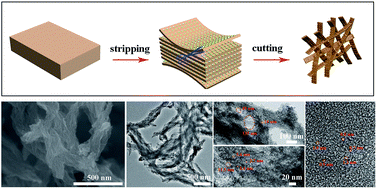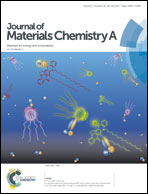From biomass with irregular structures to 1D carbon nanobelts: a stripping and cutting strategy to fabricate high performance supercapacitor materials†
Abstract
One-dimensional (1D) nanostructures have been identified as the most viable structures for high-performance supercapacitors from the view of high ion-accessible surface area and rapid electron transport path as well as excellent mechanical properties. Herein, we report a “stripping and cutting” strategy to produce 1D carbon nanobelts (CNB) from tofu with irregular structures through a molten salts assisted technique. It is a completely novel and green avenue for constructing 1D carbon materials from biomass, showing large commercial potential. The resultant CNB electrode delivers a high specific capacitance (262 F g−1 at 0.5 A g−1) and outstanding cycling stability with capacitance retention up to 102% after 10 000 continuous charging/discharging cycles. Additionally, a CNB//CNB symmetric supercapacitor and CNB//MnO2–CNB asymmetric supercapacitor are assembled and reach energy densities of 18.19 and 29.24 W h kg−1, respectively. Therefore, such a simple, one-pot and low-cost process may have great potential for preparing eco-friendly biomass-derived carbon materials for high-performance supercapacitor electrodes.



 Please wait while we load your content...
Please wait while we load your content...